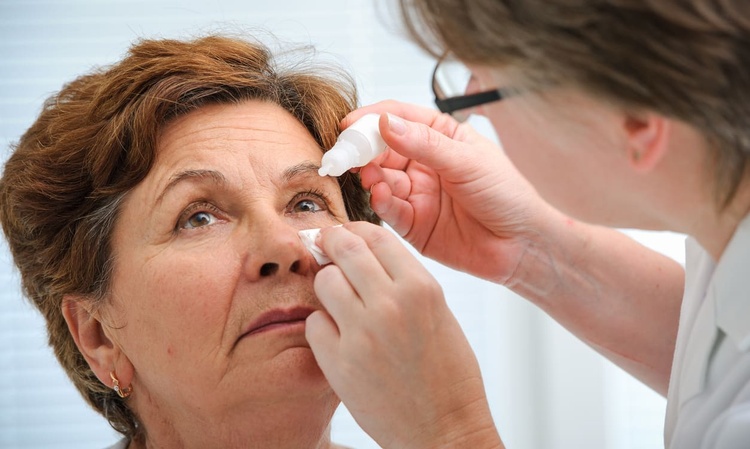Recently Approved Eye Drop Shows Promise for Age-Related Vision Issues
Age-related vision problems affect millions of people worldwide, with conditions like presbyopia, dry eye, and macular degeneration becoming increasingly common as the population ages. Recent developments in ophthalmology have introduced innovative eye drop treatments that offer new hope for those struggling with declining vision. These breakthrough medications represent a significant shift from traditional approaches, providing less invasive alternatives to surgical procedures while delivering measurable improvements in visual function.

What Makes This Eye Treatment Revolutionary?
The recently approved eye drop represents a groundbreaking approach to treating presbyopia, a condition that typically begins affecting people in their 40s. Unlike previous treatments that required reading glasses or surgical intervention, this innovative eye treatment works by temporarily reducing pupil size, which increases the depth of field and improves near vision. The active ingredients in these drops help the eye focus more effectively on close objects while maintaining distance vision clarity.
Clinical trials have demonstrated significant improvements in patients’ ability to read small print and perform detailed tasks without assistance. The treatment works within 15 minutes of application and can provide clear near vision for up to six hours. This represents a major advancement in non-surgical vision correction, offering patients a convenient daily solution for age-related focusing difficulties.
How Does This Approved Eye Drop Compare to Traditional Methods?
Traditional treatments for age-related vision issues have primarily relied on corrective lenses or surgical procedures. Reading glasses, bifocals, and progressive lenses have been the standard approach for presbyopia management. While effective, these solutions often come with limitations such as aesthetic concerns, inconvenience, and the constant need for adjustments as vision changes over time.
This approved eye drop offers several advantages over conventional treatments. Users can maintain their natural appearance without glasses, experience improved confidence in social and professional settings, and enjoy greater flexibility in daily activities. The drops provide a middle ground between doing nothing and committing to surgical intervention, making them an attractive option for people who want to address their vision concerns without permanent alterations to their eye structure.
Understanding Age-Related Vision Issues Treatment Options
Age-related vision problems encompass various conditions that require different treatment approaches. Presbyopia affects the eye’s ability to focus on near objects due to changes in the lens flexibility. Dry eye syndrome becomes more prevalent with age as tear production decreases. Age-related macular degeneration can cause central vision loss, while cataracts cloud the natural lens of the eye.
Modern age-related vision issues treatment has expanded beyond traditional methods to include targeted pharmaceutical solutions. These new treatments address the underlying physiological changes that occur with aging, rather than simply compensating for vision loss. The approved eye drops work by targeting specific muscle groups in the eye, temporarily improving the eye’s natural focusing mechanism and providing clearer vision at multiple distances.
Comparing Lasik for Both Nearsighted and Farsighted Patients
While the new eye drops offer a non-surgical solution, it’s important to understand how they compare to established procedures like LASIK. Lasik for both nearsighted and farsighted patients has been a popular choice for permanent vision correction, reshaping the cornea to improve how light enters the eye. However, LASIK primarily addresses refractive errors rather than age-related focusing problems.
The key difference lies in the type of vision problem being addressed and the permanence of the solution. LASIK provides long-term correction for distance vision issues but may not prevent or treat presbyopia that develops with age. The newly approved eye drops specifically target age-related near vision problems and can be used alongside existing distance vision corrections, whether from previous LASIK surgery, contact lenses, or glasses.
Comprehensive Eye Vision Correction in the Modern Era
Today’s eye vision correction landscape offers patients more choices than ever before. The integration of pharmaceutical treatments with existing optical and surgical options creates a comprehensive approach to vision care. Patients can now work with their eye care professionals to develop personalized treatment plans that may include multiple modalities.
The approved eye drops represent part of this evolving ecosystem of vision correction options. They can be used independently for mild to moderate presbyopia or in combination with other treatments for more complex vision needs. This flexibility allows patients to adapt their vision correction strategy as their needs change over time, providing a dynamic solution rather than a one-size-fits-all approach.
| Treatment Type | Provider/Method | Key Features | Typical Cost Range |
|---|---|---|---|
| Prescription Eye Drops | Allergan/Bausch + Lomb | Daily use, temporary effect, non-invasive | $80-$120 per month |
| LASIK Surgery | LasikPlus, NVISION | Permanent correction, quick procedure | $2,000-$4,000 per eye |
| Progressive Lenses | Pearle Vision, LensCrafters | Multiple prescriptions in one lens | $200-$600 per pair |
| Contact Lenses | Johnson & Johnson, CooperVision | Multifocal options available | $300-$700 annually |
Prices, rates, or cost estimates mentioned in this article are based on the latest available information but may change over time. Independent research is advised before making financial decisions.
The introduction of approved eye drops for age-related vision issues marks a significant milestone in ophthalmology. These treatments offer patients a new avenue for addressing presbyopia and related conditions without the commitment or risks associated with surgical procedures. As research continues and additional formulations receive approval, patients can expect even more options for maintaining clear, comfortable vision throughout their lives. The key to successful treatment lies in working closely with qualified eye care professionals to determine the most appropriate approach based on individual needs, lifestyle, and vision goals.
This article is for informational purposes only and should not be considered medical advice. Please consult a qualified healthcare professional for personalized guidance and treatment.




